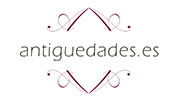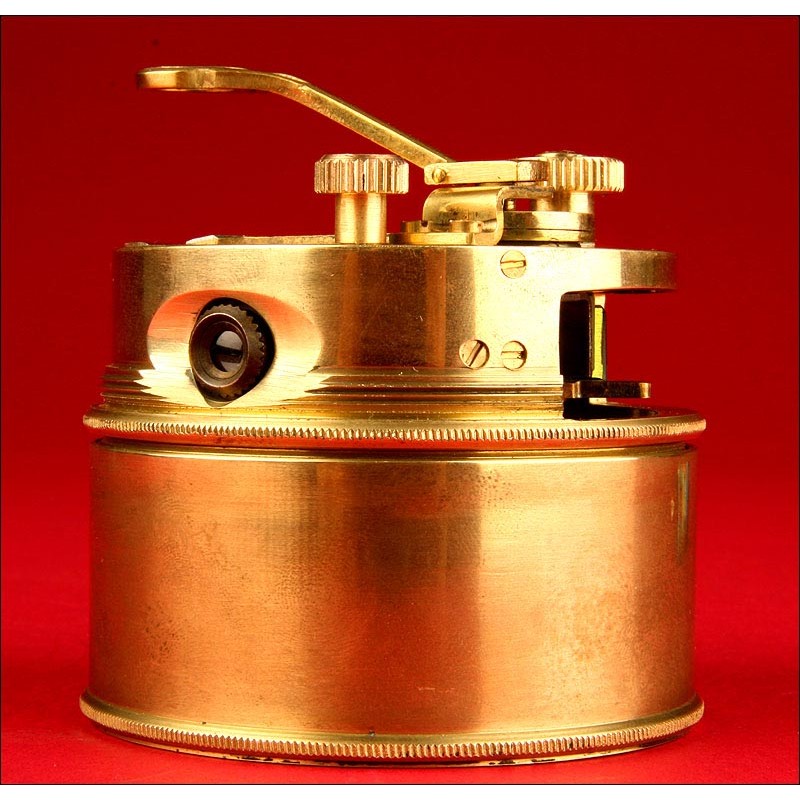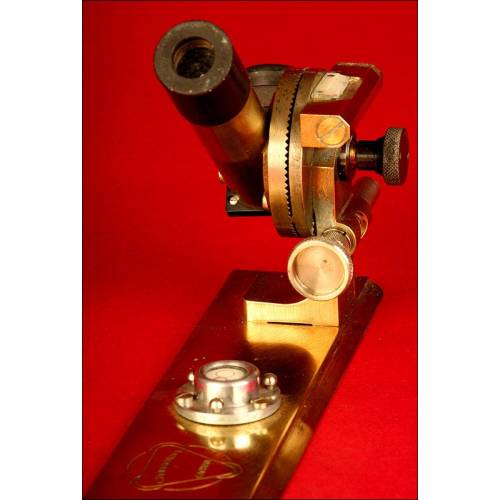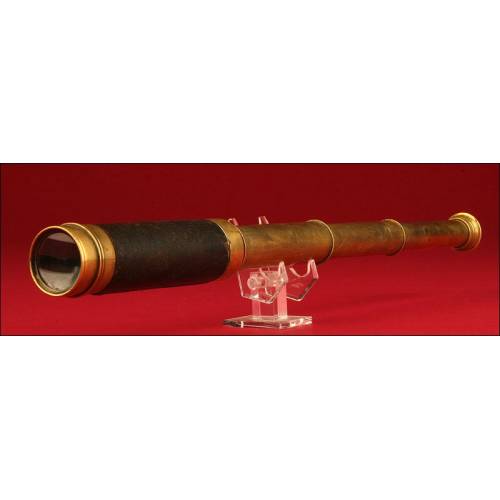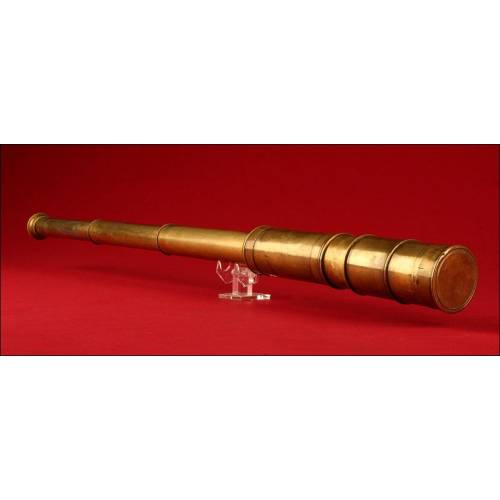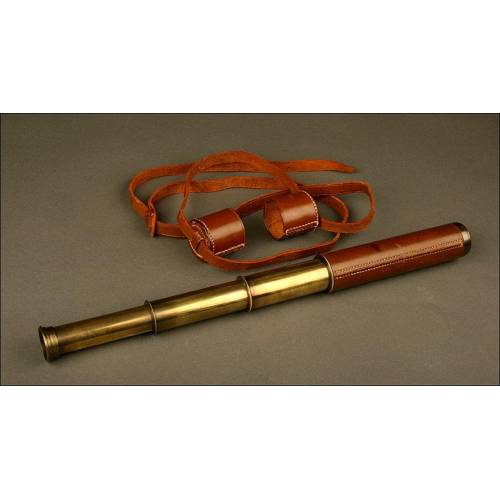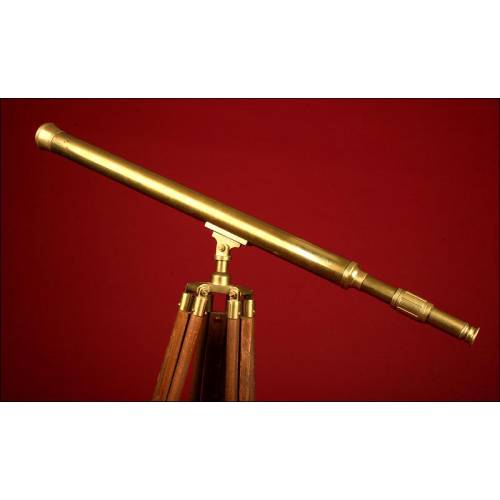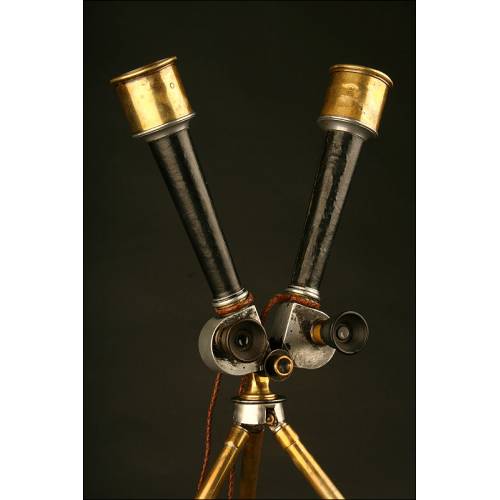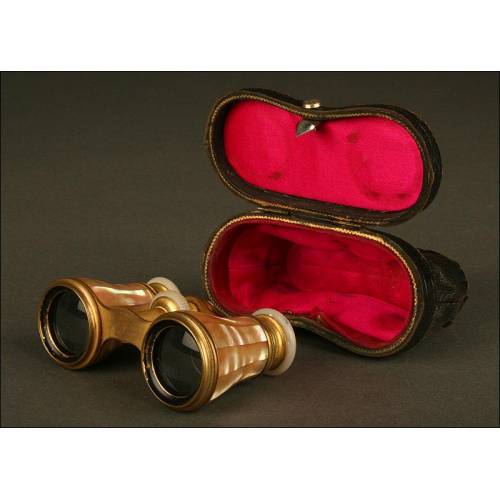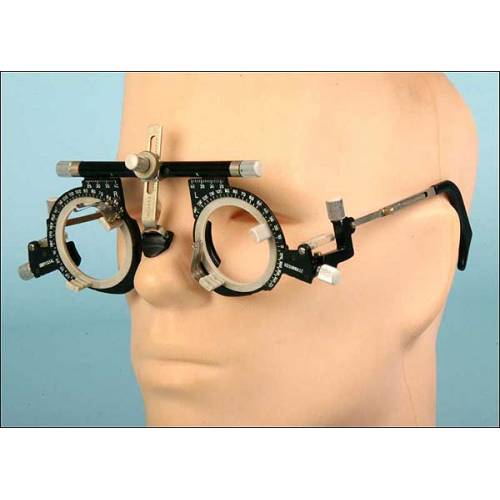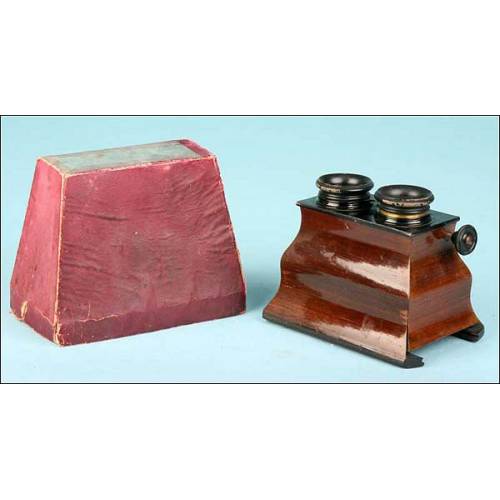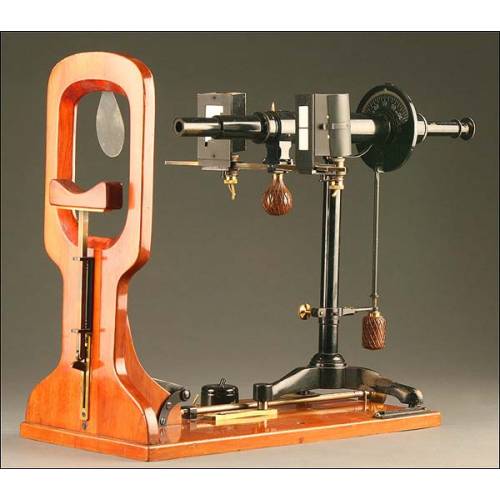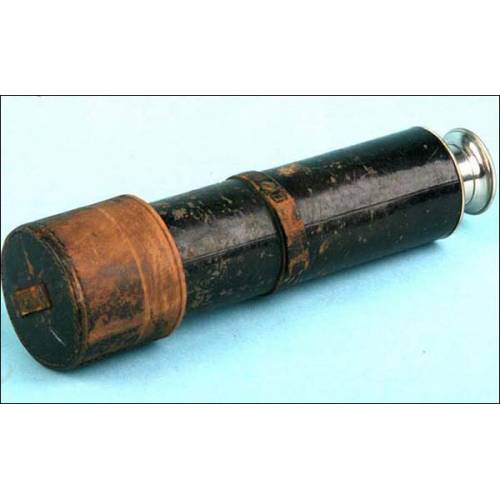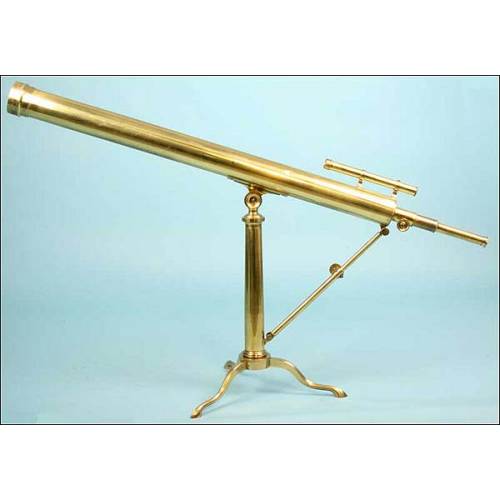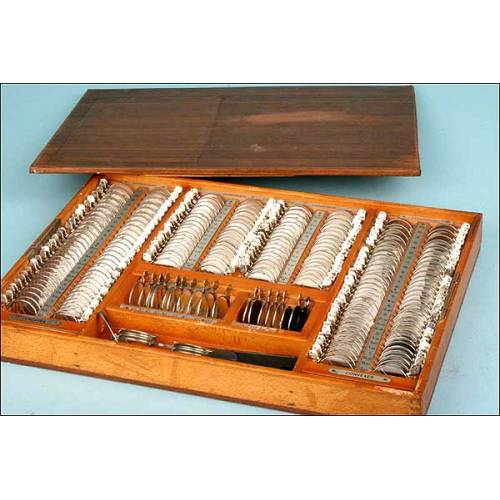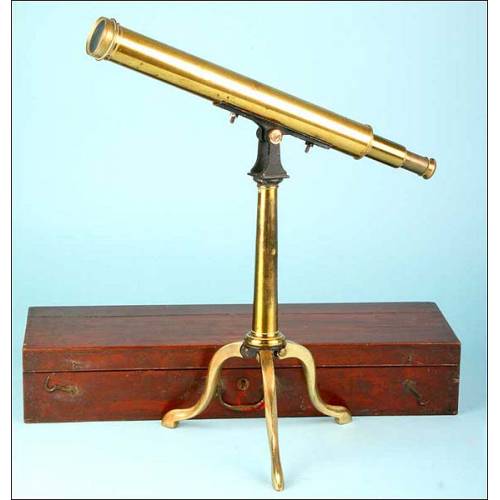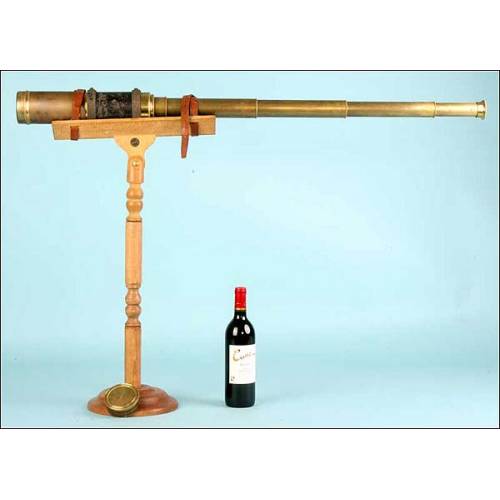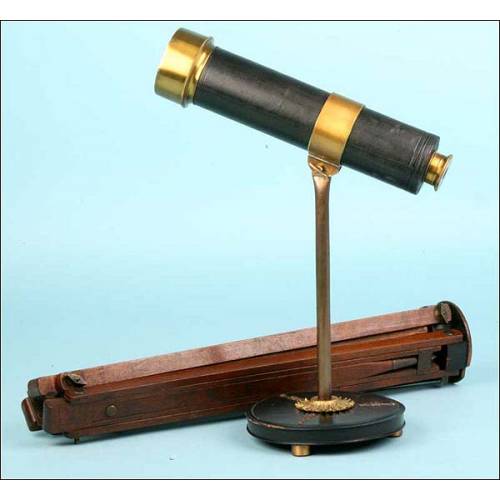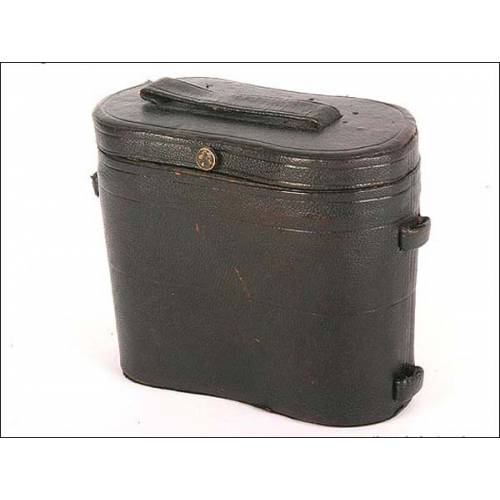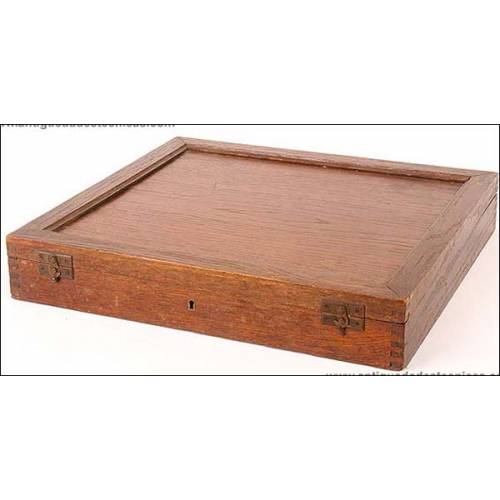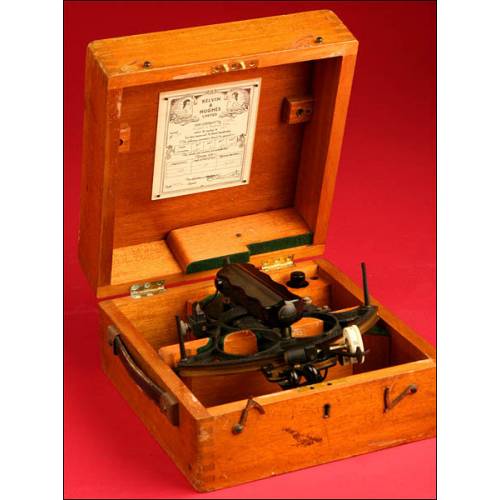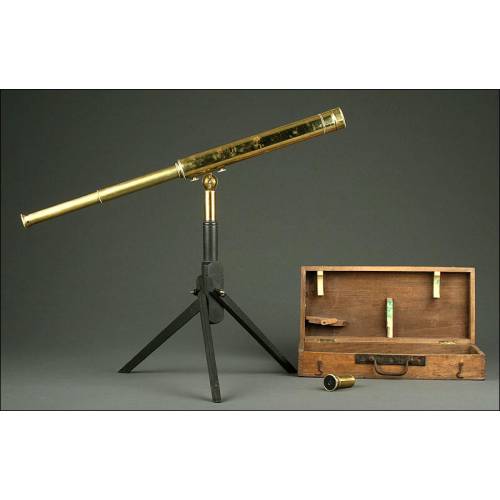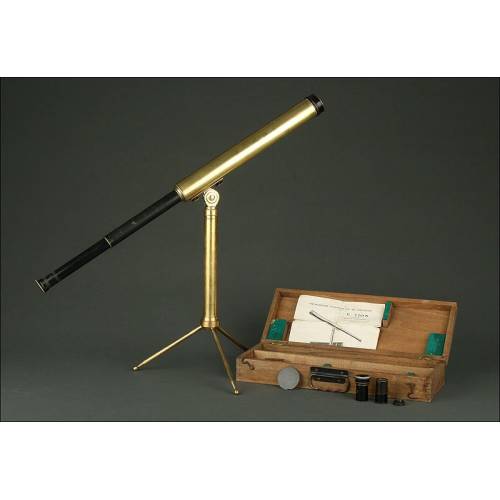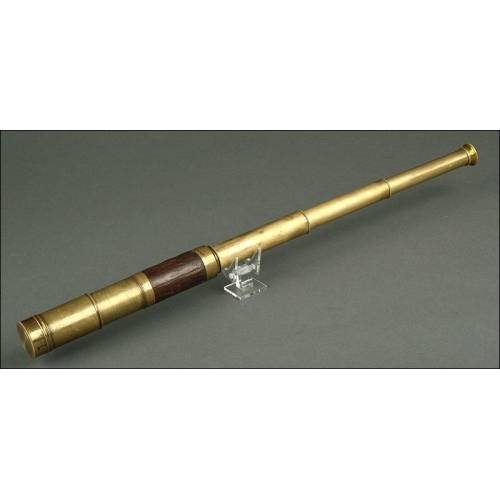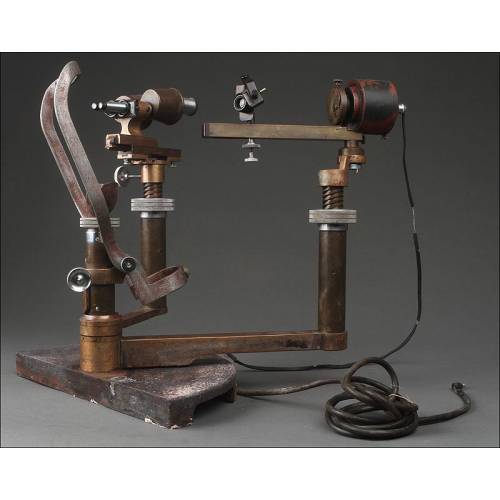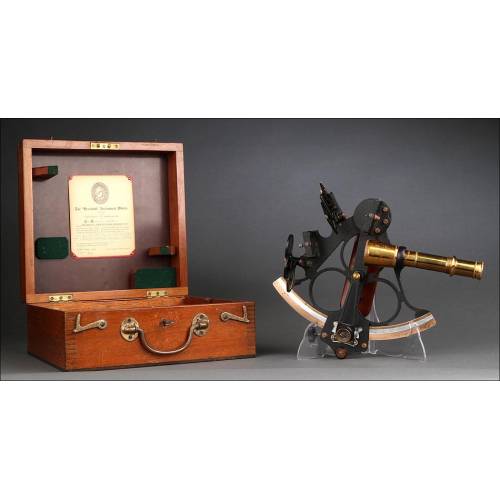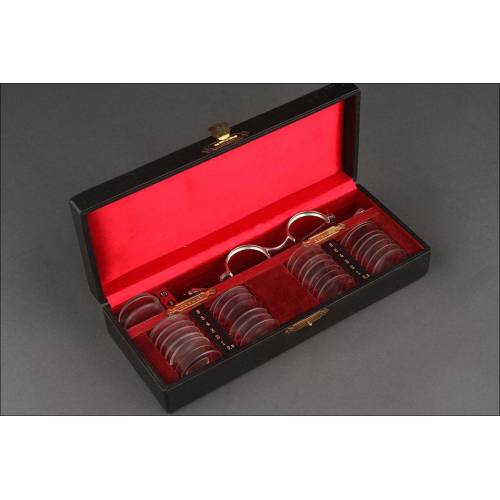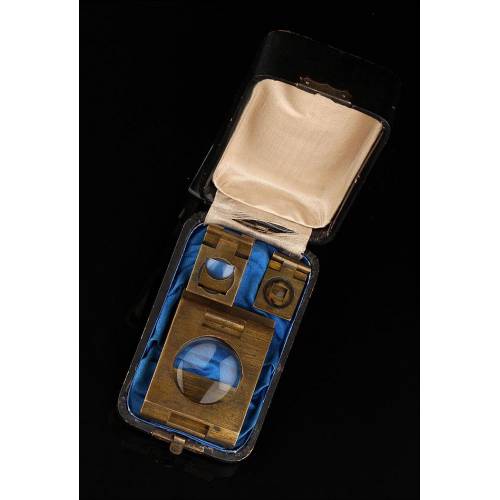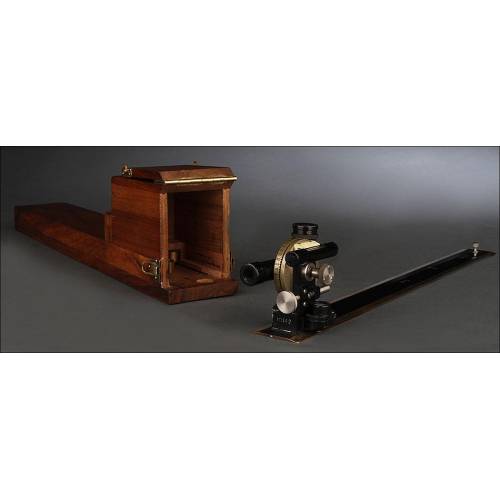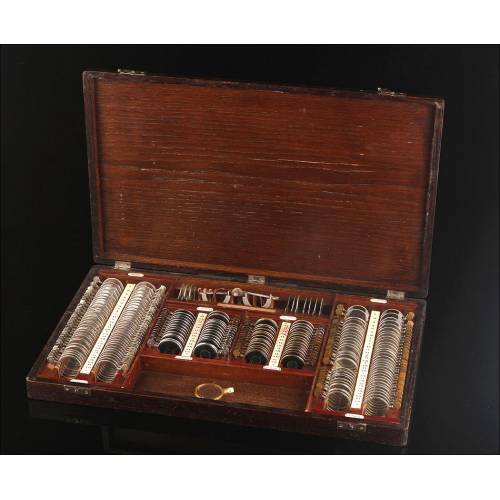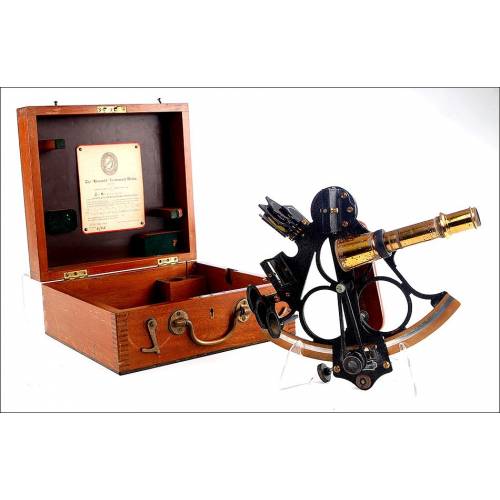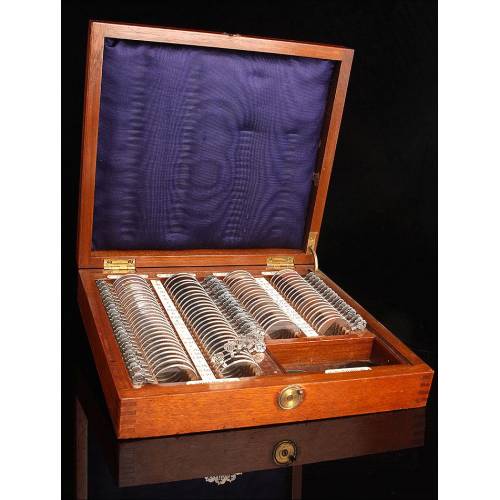J-480
Original Copper Pocket or Drum Sextant, 1930s.
Pocket or Drum Sextant, 1930s.
Sold!
Beautiful and Original Pocket Sextant or drum, made in the 30s. It is a device of small dimensions used by surveyors for studying the terrain. Made of copper, known for having all necessary parts of a normal sized sextant. The optical components of a sextant are miniaturized and placed within a cylindrical casing. By two side levers can move the arches for exact grades, and thus calculate our position. The arch is graduated from 0 ° to 120 ° Vernier scale. You can clearly read the degrees by the magnifying glass at the top, which certainly makes our work easier. Deputy index mirror, glass horizon, shadows and telescope in excellent condition. All those parts of the instrument are contained in a circular area of ??approximately 75 mm copper in diameter. The index arm and mirrors are completely protected when the instrument is not in use, by a cap that can be removed and bolted on the bottom, to facilitate quickly making position.It's a totally original piece, perfect for use or for decoration. This is a totally genuine piece of the 1930s and, unusually, has no manufacturer name. This is an extraordinary sextant, smaller and lighter than the nautical sextant, not much bigger than a pocket instrument. This type of sextant was used for studies of ordinary earth, rather than for astronomical applications due in part to its small size. The sextant is an instrument for measuring angles between two objects. It applies to the distance between two points on a coast or a star, usually the sun and the horizon. Knowing the elevation of the sun and the time of day, you can quite accurately determine the latitude at which the observer. This determination is made quite accurately by mathematical calculations, easy to apply thanks to this device. This instrument would replace the astrolabe to have greater precision, making for centuries in an object indispensable in maritime navigation, including aviation. Loses its hegemony when, in the last decades of the twentieth century, are imposed, with the advancement of technology, more modern systems, especially thanks to the positioning by satellite. The sextant name comes primarily from the instrument scale, which covers an angle of 60 degrees, or what is the same, one sixth of a full circle. By applying the rotation of the mirrors, and thanks to the design of the sextant, one can measure elevation angles of the stars on the horizon and thereby indicate our position.Sextant very original ... perfect for a very special person.Dimensions: 4 cm (closed height) and 7 cm (height mounted on its base).
